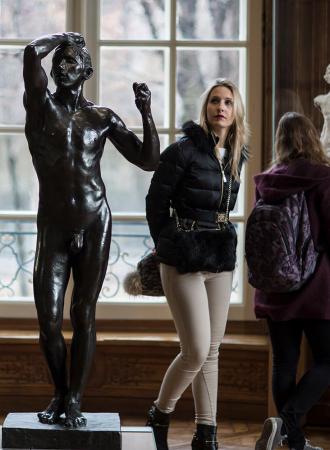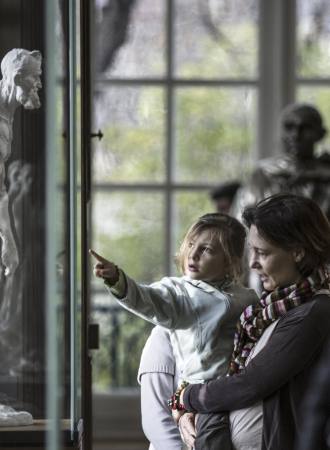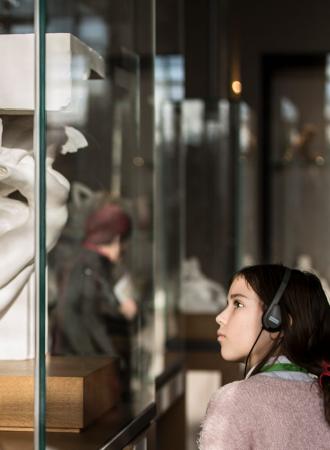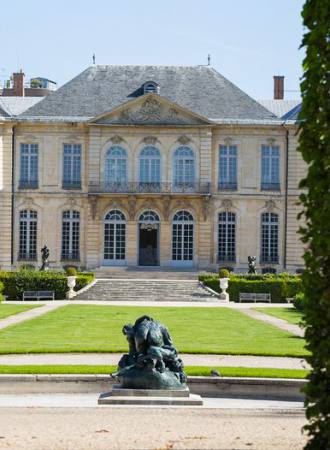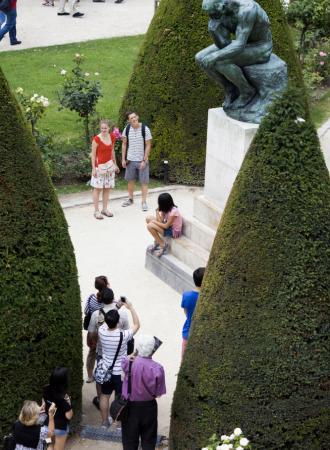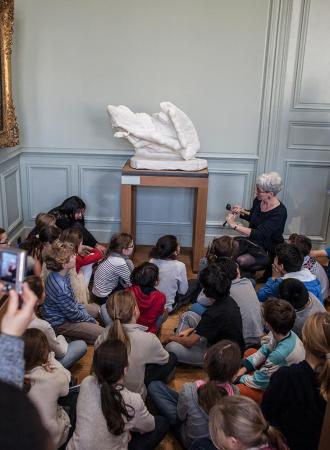Search the site
Barbara Hepworth
A NEW AESTHETIC: SCULPTURE FOR A MODERN WORLD
After Rodin (1840-1917), a different kind of sculpture came into being. Around 1905 in France, the sculptor Aristide Maillol restored density to his freestanding figures, and from 1909 onwards Constantin Brancusi took this revival of the basics of sculpture to its highest degree of refinement. The next development came with the work of the sculptors Henry Moore and Barbara Hepworth in 1920s Britain.
Distancing herself from Rodin’s powerful expressionism, Barbara Hepworth sought a new aesthetic founded on the language of form and volume. The poetic nature of her sculpted volumes was largely inspired by the natural and plant world. Her organic sculpture also represents her world view: for post-World War I society, this new sensibility conveyed an impression of peace in opposition to the atrocities of recent years.
Hepworth’s artistic vocabulary contrasted with the work of other sculptors, founded on pathos, based on construction or inspired by machines. In 1934, she wrote that her aim was to ‘project into a plastic medium some universal or abstract vision of beauty.’ The essence of her art lies in the play of convex and concave, the subtle contrast of solid and void. Beneath the silent exterior of solid forms, Hepworth’s art aspired to an ideal world, allowing her, in her own words, to ‘swallow despair.’
Hepworth’s aesthetic also stemmed from her love of material – which she carved directly, as if seeking to extract a singular harmony from the intrinsic characteristics of each block. After World War II, she reinvented the art of plaster sculpture, working it by hand to create her monumental pieces.The aim of the Musée Rodin’s exhibition is to provide an overview of her art and career and an insight into her working methods with a recreation of her studio environment.
Vue de l'oeuvre
THE REDISCOVERY OF AN OUTSTANDING ARTIST
Little known to the french public, Barbara Hepworth, although her significance as an artist was recognised in her day. She and her husband Ben Nicholson frequented artistic circles in France, visiting Brancusi, Picasso, Braque, Mondrian and meeting Arp, Calder and Miro. From 1939 on, Hepworth worked in Cornwall, whose landscapes had a profound influence on her work. Hepworth was greatly honoured in Britain in her lifetime and was made a Dame of the British Empire by the Queen. The MoMA in New York acquired its first Hepworth in 1936, and her work was shown in a series of exhibitions: at the Venice Biennale, in San Francisco, Sao Paulo and Tokyo... The Musée Rodin is one of the very few places in France to have exhibited Barbara Hepworth’s work in her lifetime, so it naturally fell to the same museum — which included her in group exhibitions over 60 years ago — to reintroduce her powerful and poetic art to the French public.
CURATORS
Catherine Chevillot, general curator and director of the Musée Rodin.
Sara Matson, curator at Tate St Ives.
SCENOGRAPHY
Atelier Maciej Fiszer
PARTNERSHIP
Exhibition hold in association with Tate.

Exhibition(s) location(s)
Musée Rodin
77, rue de Varenne, 75007, Paris
Dates
From November 5, 2019 to March 22, 2020
